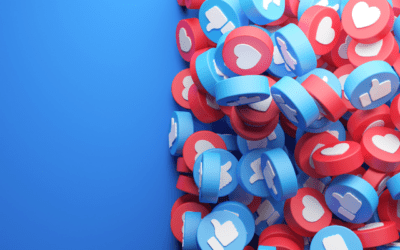Events have always been a crucial part of B2B marketing. We go to industry events for the networking opportunities, information exchange, and to connect with potential buyers. The COVID-19 crisis has made the traditional way of partaking in events—travelling, setting up a booth, and talking with as many people as possible—impossible right now, but that doesn’t mean we have to give up on these opportunities. Virtual events, events taking place over Zoom or on the internet, are more important than ever, but you should have a show strategy to maximize their effectiveness. Read on for ways to make the most out of your participation in virtual events.
Create a strategy for your virtual event
Every success starts with a strategy. Whether you’re participating as an event vendor or sponsor, consider all the ways you can reach potential buyers before, during, and after the event.
Before you dive into the long list of marketing devices available as part of the show, define what you want to get out of it. Look at the opportunities and short-list them. Before you make your final decision, for each, consider how you can measure success quantitatively and qualitatively. Don’t shy away from testing and measuring the success of new tactics. This is an unprecedented time and you’ve already made the bulk of the investment.
Each show has its own list of sponsor marketing opportunities available in different phases of the event. Consider the best ones to get your brand in front of potential customers as part of a sponsorship.
Pre-event
A lot of work goes into the pre-event marketing, whether it’s in-person or virtual. Sponsors are included every step of the way and you might consider incorporating your brand into the event marketing. Sponsorship slots are often available on:
- Event website and landing page
- Banner advertising
- Social media posts
- Event newsletter
Maximize your email house list by sending a special offer or gift for people who book a one-on-one with you during the show. Think about rewards for people who visit your booth. Make sure you’re set up to send automatic event reminders and registration confirmations.
During event
Your efforts during a virtual event will be similar to those during an in-person event—with a few twists. You’ll want to set up an exhibition “booth” in a “trade hall,” but it will have to be digital. This will likely include live online chat, digital brochures and collateral, pre-recorded video, and online product demos. Here are a few tips for your booth:
- Take the time to produce high-quality video ahead of time. You’ll need this to run between speakers and it can be an effective way to maximize “down” time.
- Consider what special offers you can provide to visitors.
- Build graphically pleasing and clear transition slides for your speakers.
- Run polls, competitions, and surveys during the event. This can boost engagement and generate valuable feedback.
- Don’t forget the gift bag! Create a web page or use social media to give delegates access to a range of special offers.
In addition to your booth, you’ll do best by having dedicated social media staff to run livestreams and post updates.
Post event
Virtual events pose some challenges to marketers but have one major advantage over in-person shows: They can live on, online, for up to a year. This means that the work you put into the event has the potential to attract views, build engagement, inform audiences, and promote sponsors long after the date has passed. Plus, the video content and digital collateral produced during the show can be repurposed as needed. Plan ahead to keep up the momentum after the virtual event has ended:
- On-demand content.
- Post-event emails and social media.
- Video snippets like highlight reels, individual sessions, and short-form video. These can include sponsor acknowledgements such as opening and closing slides with logos and links.
- Podcasts. If you presented during a speaker session or Q&A you may be able to repackage that content into a podcast after the event. Top and tail the event audio with a new intro and outro and include a mention of your sponsors as relevant.
Virtual events present some unique challenges to marketers but also some opportunities. With planning and strategy, you can maximize your impact before, during, and long after the show has ended.


